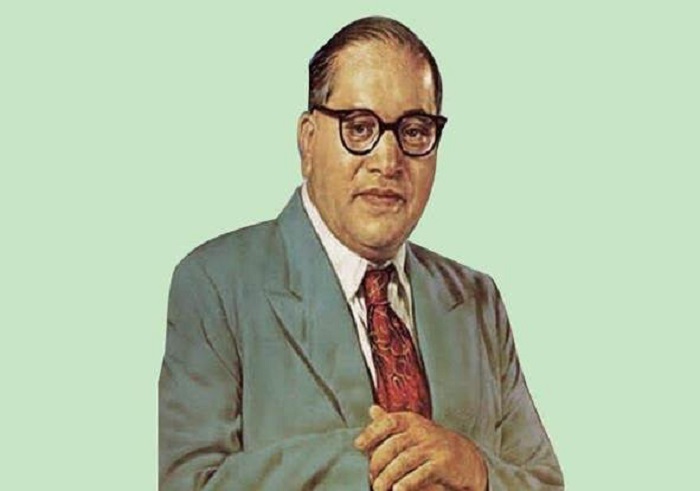Presentation : SR Darapuri, National President, All India Peoples Front
Courtesy: Grok
 The drift of Dalit politics from Dr. B.R. Ambedkar’s principled framework—rooted in social justice, equality, and annihilation of caste—towards fragmented, opportunistic, or co-opted forms poses a significant challenge in confronting the combined forces of Hindutva and corporate politics. To address this, Dalit politics must realign with Ambedkarite ideology while adapting to contemporary realities. Below is a suggested ideology and agenda to meet the onslaught of Hindutva-corporate politics:
The drift of Dalit politics from Dr. B.R. Ambedkar’s principled framework—rooted in social justice, equality, and annihilation of caste—towards fragmented, opportunistic, or co-opted forms poses a significant challenge in confronting the combined forces of Hindutva and corporate politics. To address this, Dalit politics must realign with Ambedkarite ideology while adapting to contemporary realities. Below is a suggested ideology and agenda to meet the onslaught of Hindutva-corporate politics:
Ideology
- Ambedkarite Core with Intersectionality:
– Recommit to Ambedkar’s vision of liberty, equality, fraternity, and justice, emphasizing the annihilation of caste as a socio-political goal.
– Integrate intersectionality to address overlapping oppressions—caste, class, gender, and religion—acknowledging the diverse experiences within Dalit communities.
– Uphold secularism and constitutionalism to counter Hindutva’s majoritarian ideology, which often marginalizes Dalits while appropriating their identity for electoral gains.
- Anti-Capitalist and Anti-Caste Synthesis:
– Recognize the nexus between caste and corporate capitalism, where economic liberalization often excludes Dalits from equitable wealth distribution.
– Advocate for a socio-economic model that prioritizes marginalized communities, combining Ambedkar’s focus on social equality with critiques of neoliberal exploitation.
- Cultural Assertion and Pride:
– Promote Dalit cultural identity, history, and contributions to resist Hindutva’s homogenizing narrative of Hindu supremacy.
– Revive and popularize Ambedkar’s Buddhist framework as a counter-cultural and spiritual force against casteist Hindu orthodoxy.
Agenda
- Political Autonomy and Unity:
– Build a unified, independent Dalit political movement that avoids co-optation by mainstream parties (including Hindutva or corporate-aligned ones).
– Strengthen grassroots organizations and coalitions with other marginalized groups (OBCs, Adivasis, Muslims, and progressive forces) to amplify collective bargaining power.
– Develop leadership that is accountable to Dalit communities, not corporate or upper-caste interests.
- Economic Empowerment:
– Demand land reforms and equitable access to resources, as Ambedkar emphasized land as a means of economic liberation.
– Push for affirmative action in the private sector, including reservations in corporate jobs and supplier diversity for Dalit entrepreneurs.
– Advocate for universal basic income or targeted welfare schemes to address the economic precarity of Dalit communities in a corporate-driven economy.
- Educational and Intellectual Advancement:
– Ensure access to quality education through scholarships, hostels, and institutions dedicated to Dalit students, as education was central to Ambedkar’s vision.
– Foster Dalit intellectual spaces—think tanks, media, and academic platforms—to counter Hindutva’s narrative control and corporate media biases.
– Promote STEM and vocational training to equip Dalit youth for emerging economic sectors.
- Resistance to Hindutva Appropriation:
– Expose and resist Hindutva’s co-optation of Ambedkar’s legacy (e.g., symbolic gestures like renaming schemes while ignoring his anti-caste ideology).
– Mobilize against communal violence and caste atrocities, which often intensify under Hindutva’s tacit support.
– Advocate for legal reforms to strengthen anti-caste laws (e.g., SC/ST Prevention of Atrocities Act) and ensure their effective implementation.
- Global and Digital Advocacy:
– Leverage digital platforms to amplify Dalit voices, counter misinformation, and build solidarity with global anti-oppression movements (e.g., Black Lives Matter).
– Engage with international human rights bodies to highlight caste-based discrimination and corporate exploitation, pressuring the Indian state to act.
- Environmental Justice:
– Address the disproportionate impact of environmental degradation on Dalit communities, who often live in marginalized areas affected by corporate projects.
– Demand inclusion in climate policy frameworks, aligning with Ambedkar’s emphasis on dignity and survival.
Strategic Considerations
– Avoid Fragmentation: Dalit politics must overcome internal divisions (sub-caste rivalries, regionalism) to present a united front. Pan-Indian Dalit solidarity, inspired by Ambedkar’s All India Scheduled Castes Federation, is critical.
– Engage Youth: Harness the energy of Dalit youth through cultural movements, social media, and leadership training to sustain long-term resistance.
– Tactical Alliances: While maintaining autonomy, form issue-based alliances with progressive movements without compromising core principles.
Conclusion
Dalit politics must return to Ambedkar’s radical vision while evolving to address the Hindutva-corporate nexus. By combining caste annihilation with economic justice, cultural pride, and strategic alliances, it can challenge the hegemonic forces that perpetuate inequality. This requires disciplined organization, intellectual rigor, and unwavering commitment to the principles of justice and equality that Ambedkar championed.








